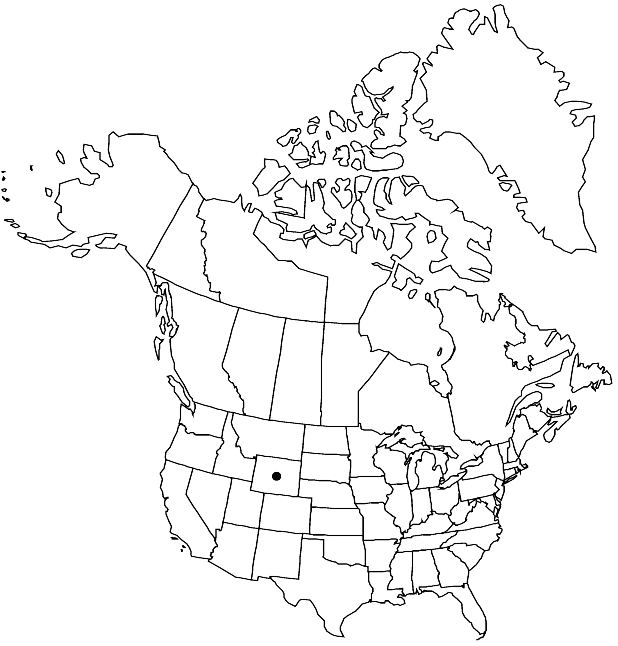Difference between revisions of "Physaria dornii"
Brittonia 35: 150, figs. 1–3. 1983.
FNA>Volume Importer |
FNA>Volume Importer |
||
| Line 48: | Line 48: | ||
|publication year=1983 | |publication year=1983 | ||
|special status= | |special status= | ||
| − | |source xml=https://jpend@bitbucket.org/aafc-mbb/fna-data-curation.git/src/ | + | |source xml=https://jpend@bitbucket.org/aafc-mbb/fna-data-curation.git/src/f6b125a955440c0872999024f038d74684f65921/coarse_grained_fna_xml/V7/V7_1043.xml |
|tribe=Brassicaceae tribe Physarieae | |tribe=Brassicaceae tribe Physarieae | ||
|genus=Physaria | |genus=Physaria | ||
Revision as of 20:19, 24 September 2019
Perennials; (compact); caudex simple, (stout); densely (silvery) pubescent throughout (except style), trichomes several-rayed, rays furcate, fused at base, (umbonate, tuberculate throughout). Stems simple from base, erect, (arising from a condensed rosette), to 1 dm. Basal leaves (ascending or erect); blade elliptic to oblanceolate to obovate, (usually curled from middle to apex), (1.5–)5–7 cm (width 12–20 mm), margins entire. Cauline leaves (1–5); blade oblanceolate, 1–2.5 cm, margins entire. Racemes compact (or elongated in fruit, to 1 dm, barely exceeding leaves). Fruiting pedicels (divaricate-ascending, slightly curved), 7–18 mm. Flowers: sepals (erect), oblong to linear or spatulate, 5.5–7 mm; petals spatulate, 10–14 mm, (claw undifferentiated from blade). Fruits didymous, irregular, highly inflated, 8–11(–18) × 10–15 mm, (papery, basal sinus shallower than the deep apical sinus; valves retaining seeds after dehiscence); replum obovate, not constricted, 1–1.8 mm, apex obtuse, as wide as or wider than fruit; ovules (4–)8(–12) per ovary; style 4–6 mm, (glabrous). Seeds flattened, (oblong to elliptic, thin-margined or not).
Phenology: Flowering May–Jun.
Habitat: Calcareous shale, slopes, ridges
Elevation: 1900-2200 m
Discussion
Of conservation concern.
Selected References
None.
